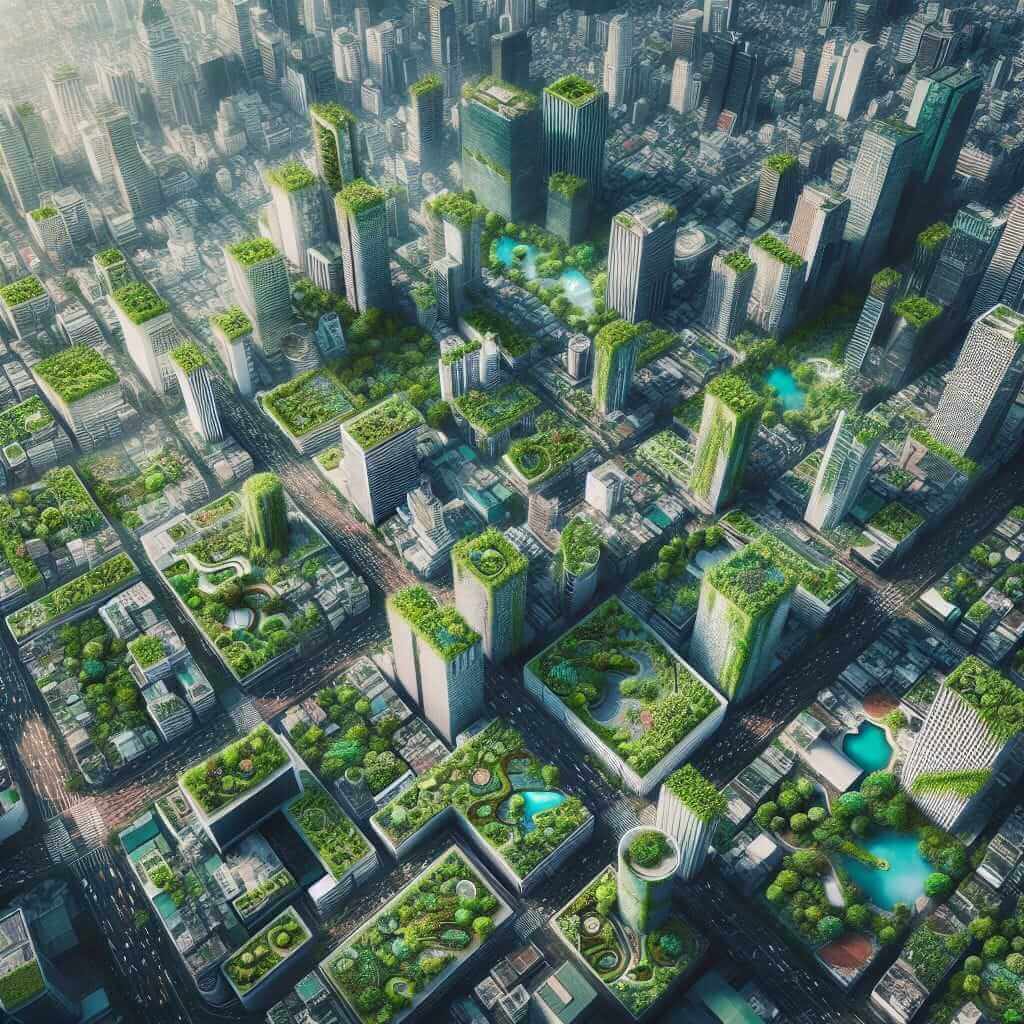The IELTS Reading section requires test-takers to analyze and comprehend texts on a variety of topics. One topic that has gained significance in recent years is “What are the challenges of implementing green infrastructure in cities?” This subject is highly relevant in today’s world, given the increasing focus on sustainable development and environmental conservation. Understanding this topic can prove beneficial not only in scoring well in the IELTS Reading section but also in staying informed about current global issues.
IELTS Reading Practice Text: Medium Difficulty
What are the Challenges of Implementing Green Infrastructure in Cities?
Green infrastructure refers to a network of natural and semi-natural spaces and elements designed to deliver a wide range of environmental, social, and economic benefits. This concept has gained popularity as cities worldwide aim to become more sustainable. However, the implementation of green infrastructure in urban settings presents numerous challenges that cities need to overcome.
Financial Constraints
One of the foremost challenges is the high cost associated with green infrastructure projects. Initial investments for developing green roofs, urban forests, rain gardens, and permeable pavements can be substantial. Additionally, maintaining these infrastructures requires ongoing funding, which can strain municipal budgets, especially in financially constrained cities.
Technical Barriers
Technical barriers also pose a significant challenge. Urban areas often lack the technical expertise required to design, implement, and maintain green infrastructure projects. This includes knowledge about the specific plants that are most suitable for different environments, methods for controlling urban flooding, and techniques for maintaining soil health in heavily built-up areas.
Regulatory and Policy Issues
Regulatory and policy issues further complicate the promotion of green infrastructure. Existing urban planning and building codes rarely consider environmental sustainability as a priority. Furthermore, obtaining the necessary permits can be a lengthy and complicated process, deterring developers from integrating green infrastructure elements into their projects.
Public Awareness and Acceptance
Gaining public support is another hurdle. Many urban residents are unaware of the benefits associated with green infrastructure or may view it as an unnecessary expense. Educating the public and involving them in community-driven green initiatives can be a time-consuming and labor-intensive process.
Space Constraints
Finally, space constraints in densely populated cities limit the opportunities for green infrastructure. Urban areas, particularly in older cities, often lack the space required for large-scale green projects. This necessitates innovative solutions such as vertical gardens and rooftop green spaces, which can be more challenging to implement.

IELTS Reading Practice Questions
Questions 1-5: Multiple Choice
Choose the correct letter, A, B, C, or D.
-
What is one primary financial challenge of implementing green infrastructure?
- A) Lack of technical expertise
- B) High initial costs
- C) Public dissatisfaction
- D) Space constraints
-
Technical barriers in green infrastructure include:
- A) Public awareness
- B) Cost of maintenance
- C) Permits and regulations
- D) Lack of knowledge on plant selection
-
Which issue is related to regulatory obstacles?
- A) Public ignorance
- B) High costs
- C) Obtaining necessary permits
- D) Lack of space
Questions 6-9: True/False/Not Given
Do the following statements agree with the information given in the text?
-
Green infrastructure projects are generally inexpensive to implement.
- True
- False
- Not Given
-
Lack of public awareness can impede green infrastructure development.
- True
- False
- Not Given
-
Policy regulations often facilitate the creation of green infrastructure.
- True
- False
- Not Given
Questions 10-12: Matching Headings
Match the following headings to the correct paragraphs:
- i) The importance of public involvement
- ii) Technical challenges in green infrastructure
- iii) Financial limitations
- iv) Regulatory hurdles
Answers and Explanations
-
B) High initial costs – Financial constraints are primarily due to the expensive upfront costs involved.
-
D) Lack of knowledge on plant selection – Technical barriers include knowledge gaps about suitable plants, methods, and maintenance.
-
C) Obtaining necessary permits – Regulatory issues involve navigating long and complicated permit processes.
-
False – The text clearly outlines the high costs associated with green infrastructure.
-
True – The text states that lack of public awareness can hinder green infrastructure projects.
-
False – The text mentions regulatory and policy issues as complicating factors, not facilitators.
i) Public Awareness and Acceptance
ii) Technical Barriers
iii) Financial Constraints
iv) Regulatory and Policy Issues
Common Challenges and Vocabulary from the Text
Common Challenges
- Misunderstanding question types, especially True/False/Not Given.
- Failure to identify key information due to dense academic language.
- Inability to manage time effectively during the reading section.
Key Vocabulary
- Green infrastructure (n): /ˌɡriːn ˌɪn.frəˈstrʌk.tʃər/ – a network of natural and semi-natural areas.
- Permeable (adj): /ˈpɜː.mi.ə.bəl/ – allowing liquids or gases to pass through.
- Sustainable (adj): /səˈsteɪ.nə.bəl/ – capable of being maintained over the long term.
Grammar Points
- Passive Voice: Often used in academic writing to describe processes. E.g., “Green infrastructure projects are implemented to provide various benefits.”
- Relative Clauses: Used to give additional information about a noun. E.g., “This includes knowledge about the specific plants that are most suitable for different environments.”
Tips for High Scores in IELTS Reading
- Skim and Scan: Quickly skim the text to get a general understanding, and then scan for specific information to answer questions.
- Practice Time Management: Allocate specific time slots to each section and stick to them.
- Expand Vocabulary: Regularly learn new words and phrases, particularly those relevant to common IELTS topics.
- Stay Updated on Current Issues: Familiarity with current global issues can make reading comprehensions easier to understand.
By focusing on practice, improving vocabulary, and mastering the IELTS Reading strategies outlined in this guide, you can enhance your chances of achieving a high score in the IELTS Reading section.